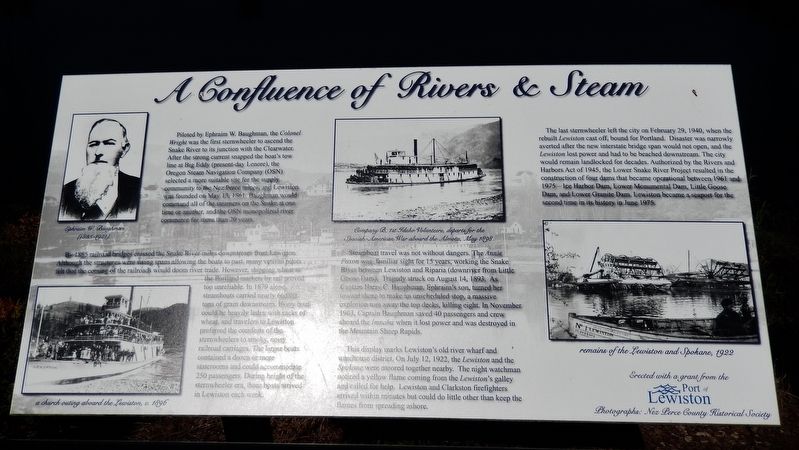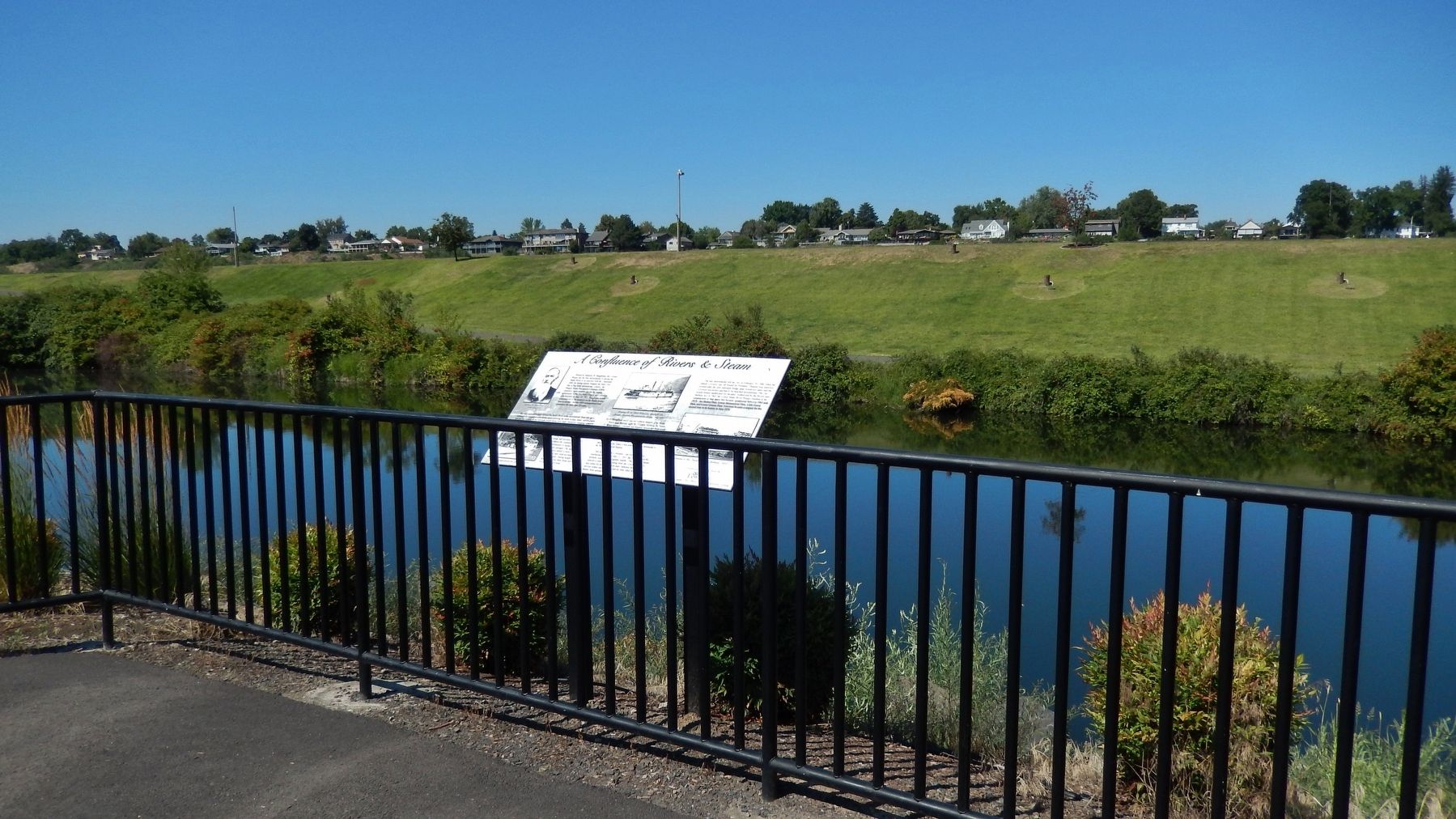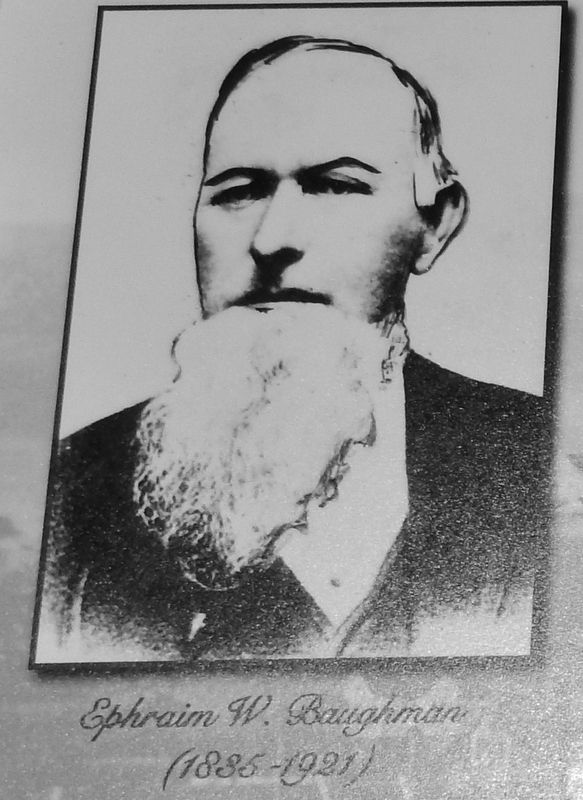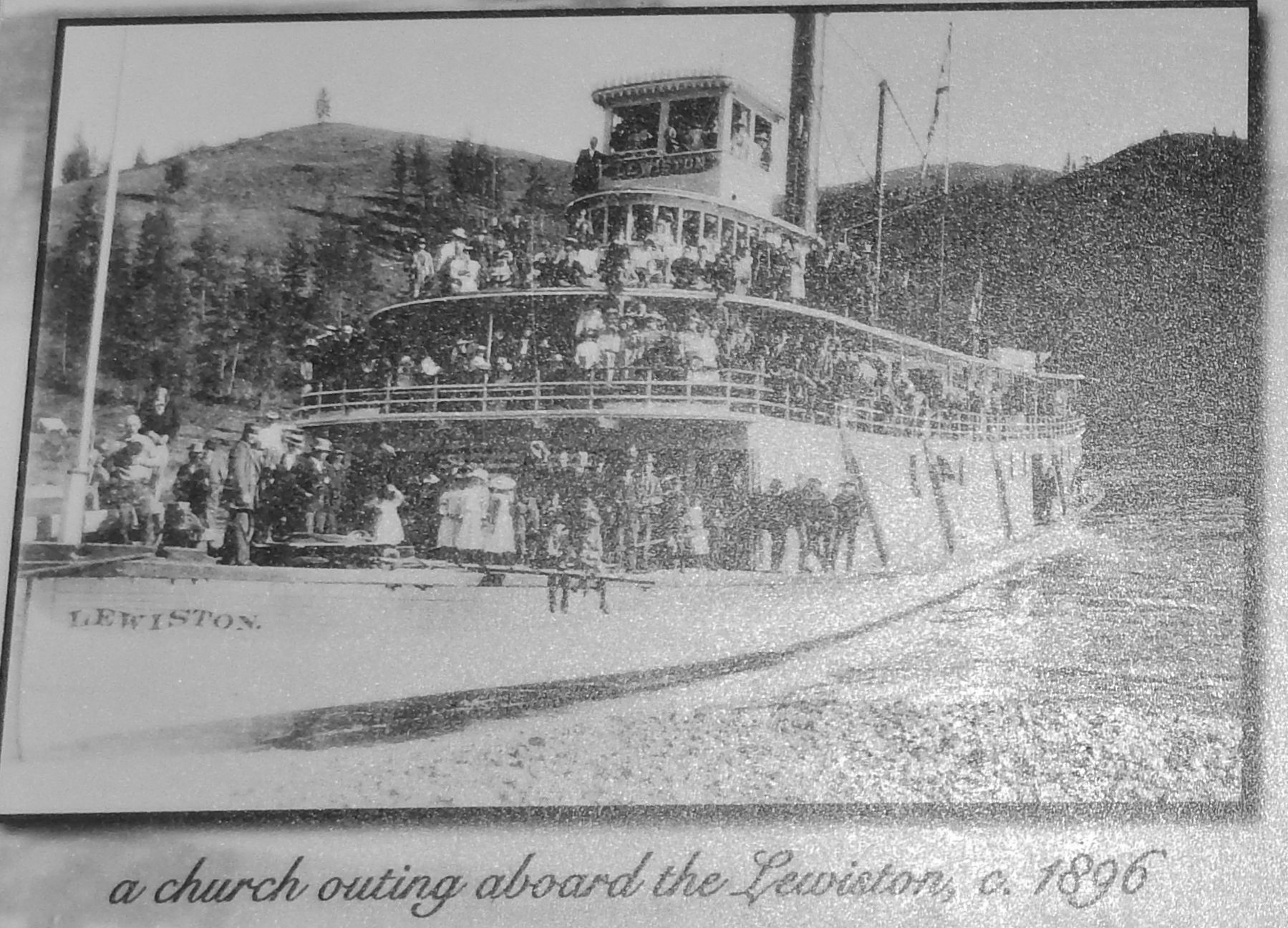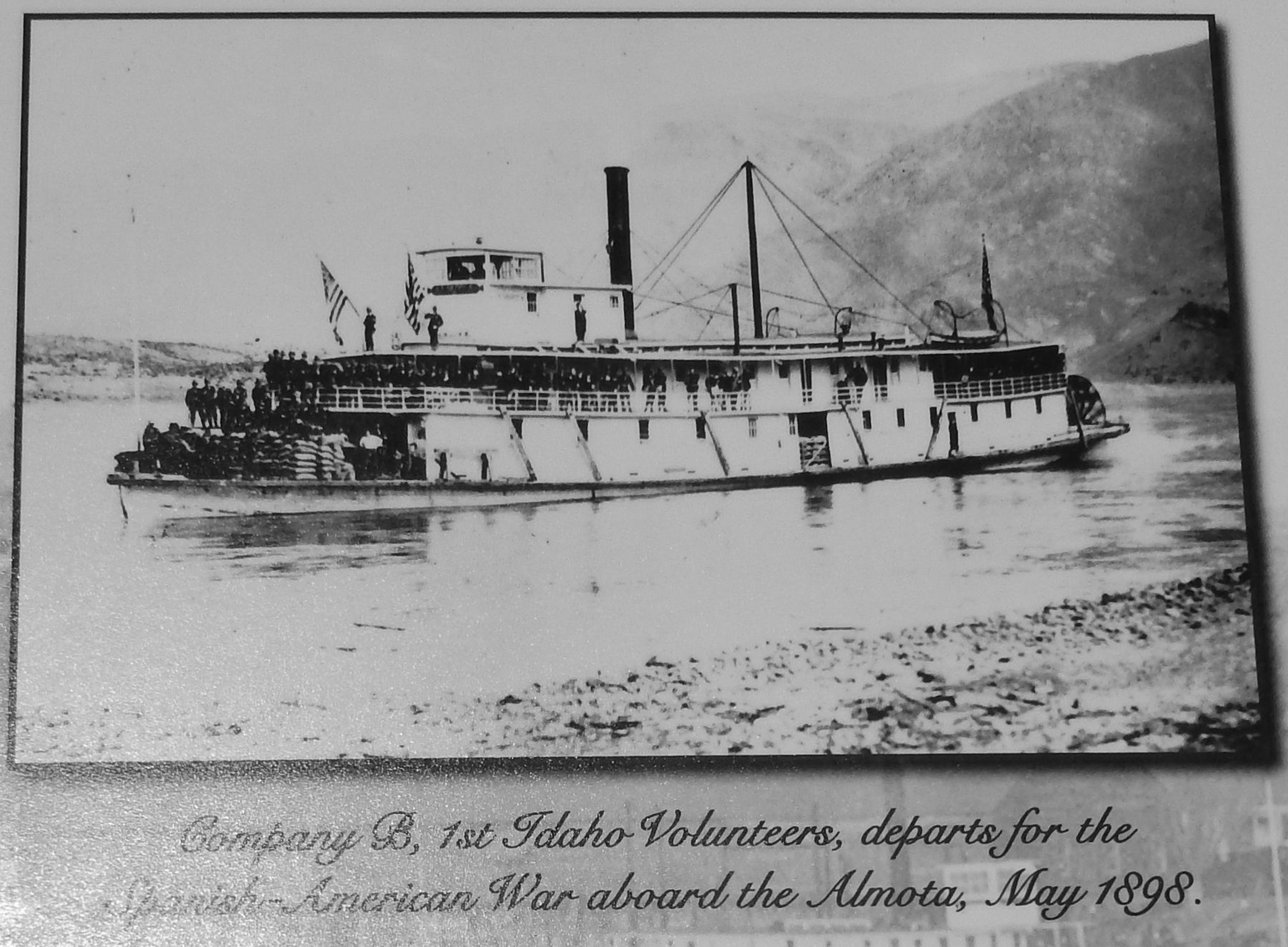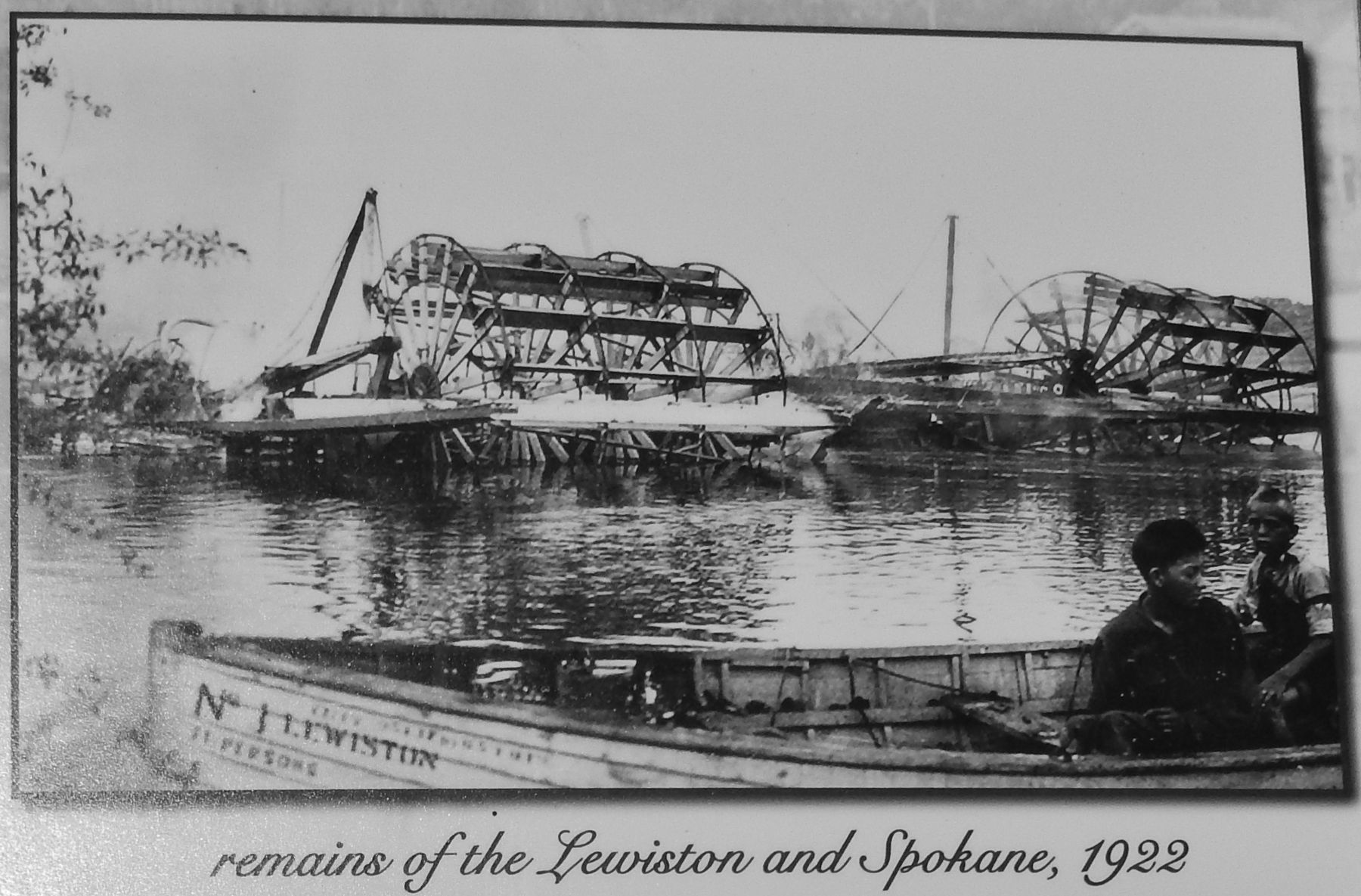Lewiston in Nez Perce County, Idaho — The American West (Mountains)
A Confluence of Rivers & Steam
Piloted by Ephraim W. Baughman, the Colonel Wright was the first sternwheeler to ascend the Snake River to its junction with the Clearwater. After the strong current snapped the boat’s tow line at Big Eddy (present-day Lenore), the Oregon Steam Navigation Company (OSN) selected a more suitable site for the supply community to the Nez Perce tribes, and Lewiston was founded on May 13, 1961. Baughman would command all of the steamers on the Snake at one time or another, and the OSN monopolized river commerce for more than 20 years.
By 1885 railroad bridges crossed the Snake River miles downstream from Lewiston. Although the structures were swing spans allowing the boats to pass, many veteran pilots felt that the coming of the railroads would doom river trade. However, shipping wheat to the Portland markets by rail proved too unreliable. In 1879 alone, steamboats carried nearly 66,000 tons of grain downstream. Every boat could be heavily laden with sacks of wheat, and travelers to Lewiston preferred the comforts of the sternwheelers to smoky, noisy railroad carriages. The larger boats contained a dozen or more staterooms and could accommodate 250 passengers. During the height of the sternwheeler era, three boats arrived in Lewiston each week.
Steamboat travel was not without dangers. The Annie Faxon was a familiar sight for 15 years, working the Snake River between Lewiston and Riparia (downriver from Little Goose Dam). Tragedy struck on August 14, 1893. As Captain Harry C. Baughman, Ephraim’s son, turned her toward shore to make an unscheduled stop, a massive explosion tore away the top decks, killing eight. In November 1903, Captain Baughman saved 40 passengers and crew aboard the Imnaha when it lost power and was destroyed in the Mountain Sheep Rapids.
This display marks Lewiston’s old river wharf and warehouse district. On July 12, 1922, the Lewiston and the Spokane were moored together nearby. The night watchman noticed a yellow flame coming from the Lewiston’s galley and called for help. Lewiston and Clarkston firefighters arrived within minutes but could do little other than keep the flames from spreading ashore.
The last sternwheeler left the city on February 29, 1940, when the rebuilt Lewiston cast off, bound for Portland. Disaster was narrowly averted after the new interstate bridge span would not open, and the Lewiston lost power and had to be beached downstream. The city would remain landlocked for decades. Authorized by the Rivers and Harbors Act of 1945, the Lower Snake River Project resulted in the construction of four dams that became operational between 1961 and 1975 – Ice Harbor Dam, Lower Monumental Dam, Little Goose Dam, and Lower Granite Dam. Lewiston became a seaport for the second time in its history in June 1975.
Erected by Port of Lewiston.
Topics. This historical marker is listed in these topic lists: Industry & Commerce • Waterways & Vessels.
Location. 46° 25.01′ N, 117° 1.974′ W. Marker is in Lewiston, Idaho, in Nez Perce County. Marker is on Snake River Avenue, 0.2 miles south of U.S. 12, on the right when traveling south. Marker is located on pedestrian walkway, on the west side of Snake River Avenue, overlooking a pond and the Snake River Levee. Touch for map. Marker is in this post office area: Lewiston ID 83501, United States of America. Touch for directions.
Other nearby markers. At least 8 other markers are within walking distance of this marker. A Man and His Island Dream (here, next to this marker); Writings on the River (approx. 0.3 miles away); Traveling on the River (approx. 0.3 miles away); Fishing in the River (approx. 0.3 miles away); Kettenbach Building (approx. 0.3 miles away); Firsts in Lewiston (approx. 0.3 miles away); Exploring on the River (approx. 0.3 miles away); Dwellings by the River (approx. 0.4 miles away). Touch for a list and map of all markers in Lewiston.
Also see . . .
1. Biography of Ephraim W. Baughman.
In 1851 he accepted a position as fireman on the Whitman and was thus employed until 1853, when he went to the Cascades and became captain of a little sailboat, carrying lumber and merchandise on the Columbia river and also taking emigrants down the river to Portland and other points. He next became captain of the steamer Hasalo, running between the Cascades and The Dalles, and in May 1861, he was sent by the Oregon Steam Navigation Company to explore the Snake river from Caldwell to Lewiston. In 1862 he was in command of the Colonel Wright and made the first trip up the Snake River. In August 1862, in partnership with Henry Corbet (now ex-senator) and others, he built the steamboat Spray, at a cost of thirty-three thousand dollars, and in five months he earned on her trips fifty-two thousand dollars. (Submitted on November 26, 2017, by Cosmos Mariner of Cape Canaveral, Florida.)
2. The Last Trip of the Annie Faxon.
When the Annie Faxon exploded October 14, 1893, the 140-foot steamboat Spokane hurried eastward with two Walla Walla, Washington, doctors on board to aid survivors of the blast. This picture of the Spokane was taken as she made a routine stop at Riparia, Washington, in 1901 (Submitted on November 26, 2017, by Cosmos Mariner of Cape Canaveral, Florida.)
3. Steamboats of the Columbia River.
The Snake River was navigable by steamboat from Wallula up to Lewiston, Idaho. Boats on this run included Lewiston, Spokane, and J.M. Hannaford. Imnaha and Mountain Gem were able to proceed 55 miles (89 km) upriver from Lewiston, through the Snake River Canyon, to the Eureka Bar, to haul ore from a mine that had been established there. (Submitted on November 26, 2017, by Cosmos Mariner of Cape Canaveral, Florida.)
4. Picture of the Steamboat Spokane.
Spokane near Newport, Washington on the Pend Oreille River. The Spokane was built in 1903. (Submitted on November 26, 2017, by Cosmos Mariner of Cape Canaveral, Florida.)
Credits. This page was last revised on October 21, 2020. It was originally submitted on November 25, 2017, by Cosmos Mariner of Cape Canaveral, Florida. This page has been viewed 368 times since then and 16 times this year. Photos: 1, 2. submitted on November 25, 2017, by Cosmos Mariner of Cape Canaveral, Florida. 3, 4, 5, 6. submitted on November 26, 2017, by Cosmos Mariner of Cape Canaveral, Florida. • Bill Pfingsten was the editor who published this page.
